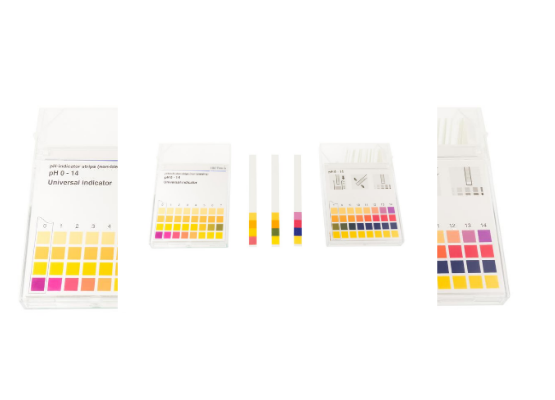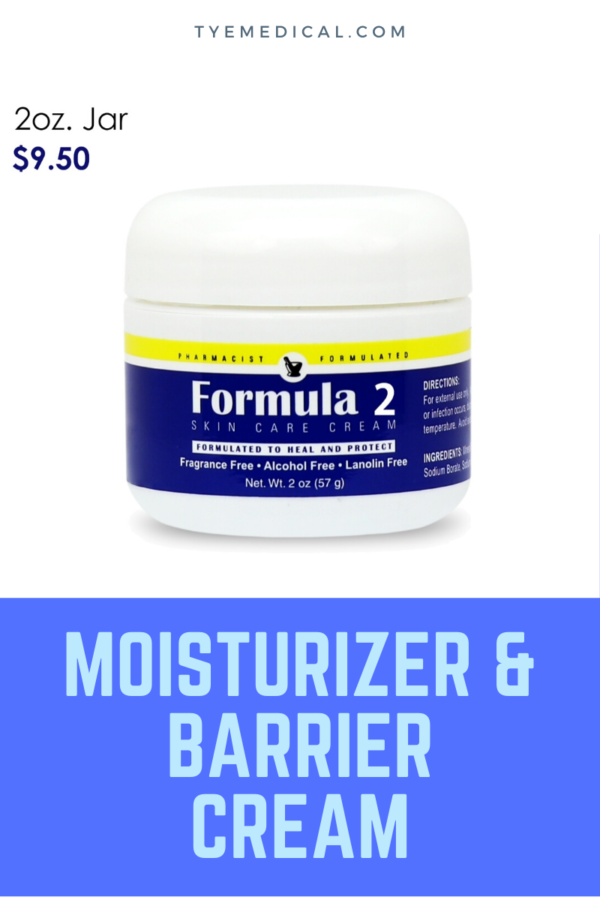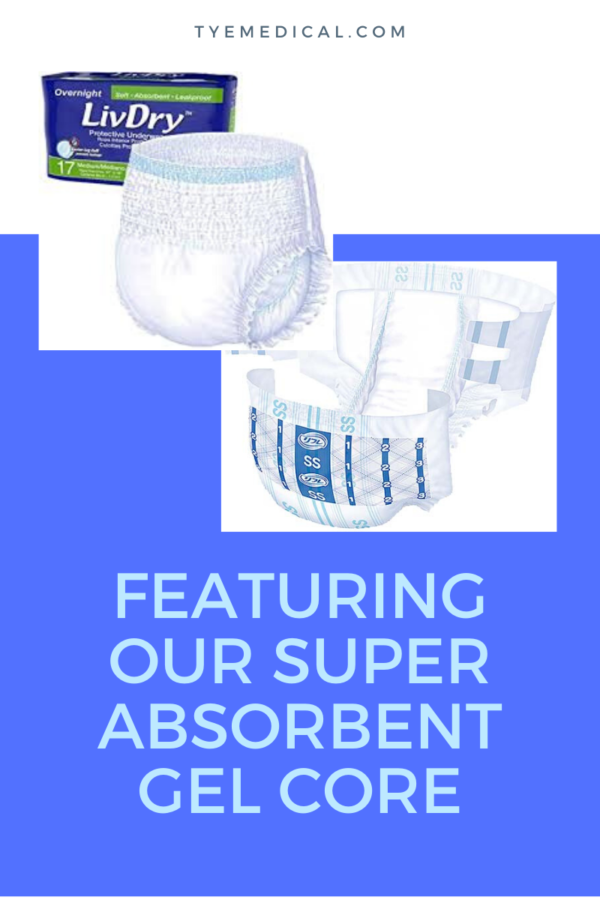Incontinence Dermatitis: How to Maintain Healthy Skin While Managing Urine Leaks
Aug 18th 2020
Things happen, and if you or your loved one are managing urine leaks, then it’s important to know the signs of incontinence dermatitis and how to manage it. As a caregiver, maybe you stopped by to visit your parents and discovered that they were having difficulty managing their incontinence. Or, perhaps you’re the one dealing with the condition and another illness or issue has kept you from caring for yourself as well as you typically do. Either way, skin problems related to urine leaks can make a challenging situation feel much worse. The good news is that you can treat and prevent incontinence dermatitis and other skin irritations when equipped with the right information.
What Is Incontinence Dermatitis?
Usually, our skin protects our internal bodies from the outside world. But when the environment succeeds in damaging our skin, bacteria and irritants flood into our system causing painful or uncomfortable symptoms.
In the case of incontinence, it’s typically urine (or fecal matter) that erodes our protective skin and leaves us exposed. Remember that our waste material is full of damaging bacteria. Once it breaks through the skin, it continues to cause problems like burning or itching around the genitals, thighs, or abdomen.
The most common symptoms of incontinence-associated dermatitis (IAD) are:
- Burning
- Itching
- Lesions
- Pain or tenderness
- Redness and inflammation
The severity of symptoms depends on how much damage has been done to the skin tissue and if any allergens were involved. Sometimes the most severe skin reactions involve some type of allergic reaction as well. So, if you or your loved one developed severe symptoms very quickly, then you might also be dealing with an allergic reaction to a product.
On the other hand, people who are well nourished and healthier tend to experience less severe symptoms.
 What Causes IAD?
What Causes IAD?
The more you’re exposed to urine or stool, the greater your risk for developing more severe incontinence dermatitis symptoms. This is because contact with the bacteria and waste increases your skin’s PH levels, and that’s not a good thing!
Healthy skin has a PH that is slightly acidic, which means it falls just below neutral on the PH scale. The touch of acidity helps your skin fight off unwelcome free radicals and harmful bacteria that cause everything from acne to aging. But when urine or stool increase your skin’s PH levels, making them more alkaline, your skin becomes more vulnerable to bacterial attacks and resulting conditions.
However, in addition to an increased PH level, exposure to other skin irritants contribute to IAD as well. Remember that ammonia is also a byproduct of our waste, and it’s a huge skin irritant that damages cells and breaks down the protective barrier you need. This makes it even easier for bacteria to invade and cause further skin erosion.
Actions that Promote Incontinence Dermatitis include:
- Leaving skin exposed to urine or stool for too long
- Not adequately cleaning the affected area
- Cleaning the affected area too much (which dries, damages, and exposes skin to bacteria)
- Too much friction between skin and absorbent pads or incontinence underwear
- Not drying the area thoroughly after cleaning (best to pat dry with soft, clean cloth)
 How Do You Prevent and Treat Incontinence Dermatitis?
How Do You Prevent and Treat Incontinence Dermatitis?
Your main goals are to stay clean, dry, and protected. Here’s how you can accomplish that:
1. Clean Gently
Avoid too much force or friction. Instead, use a soft, clean cloth to gently absorb moisture in the affected area. Then apply a PH balanced cleanser that’s made for sensitive skin. If you look for something approved for eczema, it will probably be a good choice for IAD also. Many of the cleansers listed in the above link are eczema approved and PH balanced. The right cleanser is critical because most soaps are very drying to the skin. This causes inflammation and worsens IAD symptoms. Additionally, a PH balanced cleanser will help restore the slightly acidic PH levels necessary for healthy skin. Once you’ve finished cleansing, remember to pat the area dry with a soft clean cloth. (No rubbing!)
2. Moisturize and Protect
Healing and prevention require that you moisturize the affected area daily and as needed. Hydration helps sooth the skin, repair damage, and reduce inflammation. But you’ll also need a barrier to protect your skin between changes. A barrier cream acts as a literal barrier between your skin and the irritating substances that break it down, and it also shields the area so your skin has time to heal.
You can buy a separate moisturizer and barrier cream, or you can try our 2-in-1 product specially formulated by a pharmacist to repair and protect damaged skin. Our Formula 2 Skin Care Cream is fragrance free, alcohol free, and lanolin free. Here’s what it will do for you:
- Moisturize
- Restore PH levels
- Promote healing
- Protect from further damage (3 barrier layers)
- Prevent yeast buildup
Formula 2 works great for incontinence dermatitis, but you can also use it nearly anywhere on your body to heal irritated or inflamed skin.
3. Minimize Exposure
It’s always a good idea to change your incontinence underwear or pad as soon as possible after soiling – but when you notice the first signs of IAD, it’s especially important! You’ll want to keep your skin as clean and dry as possible to promote healing. When symptoms begin, use a barrier cream after every change to maximize protection. Nighttime can be challenging, but the best course of action is to reduce fluid and food intake two hours before bedtime.
4. See Your Doctor When Necessary
Sometimes, IAD doesn’t clear up even though you’re doing the right things to promote healing. But don’t take it lightly. Skin infections can be serious, and if the inflammation is severe, the area might require topical steroids, antifungals, or antibiotics to heal your skin and maintain your health. In these cases, you’ll need to involve your doctor to get proper treatment.
 Minimize Your IAD Risk with Our Protective Underwear and Premium Briefs
Minimize Your IAD Risk with Our Protective Underwear and Premium Briefs
While it’s always best to change your incontinence underwear as soon as possible after soiling, it’s not always possible, especially at night.
In the meantime, you’ll want incontinence underwear that protects your skin, wicking moisture away from the area. This helps to keep your skin’s PH more balanced.
This is why our top LivDry products feature a Super Absorbent Gel Core that keeps you as dry as possible until you put on new underwear.
Tye Medical LivDry incontinence underwear have an absorbency of 42-90 FL OZ and can be paired with our Shaped Pads for maximum leak protection.
Shop sizes and absorption levels for Protective Underwear (tear-away sides) and Premium Briefs (with pull tabs).

